Hitting the trails can boost your mood, improve your sleep and reduce your risk of heart disease

Whether the leaves are changing in fall or the flowers are blooming in spring, getting outside for a hike can be a breath of fresh air — literally.
Advertisement
Cleveland Clinic is a non-profit academic medical center. Advertising on our site helps support our mission. We do not endorse non-Cleveland Clinic products or services. Policy
In addition to being a good form of exercise, walking through nature comes with other health benefits like lowering your blood pressure, improving sleep and reducing depression and anxiety.
So, lace up those hiking boots, grab a water bottle and some sunscreen, and get out to your nearest park to reap the rewards.
But before hitting the trails, sports medicine physician Matthew Kampert, DO, MS (who is also an Eagle Scout with the Boy Scouts of America), outlines the benefits of hiking and gives us some tips to follow while hiking.
Think of hiking as a spectrum, says Dr. Kampert.
“There’s no reason to really limit what you identify as hiking,” he continues. “I think anytime somebody gets out in nature and they’re moving from point A to point B and they’re getting their heart rate up, you can consider that a hike.”
If you’re just walking, you’ll get more of a lower-body workout. But if you have a backpack on, you’ll get more of a full-body workout.
And when it comes to how quickly you may see some of the benefits, it’s all unique to each individual. So, how long you need to be among nature depends on how active you’ve been.
“If you’re sedentary, just the smallest amount of effort will result in a lot of benefits,” explains Dr. Kampert. “But as you adapt and become more fit, you’re going to have to increase the stress on the body by either increasing the duration, the intensity or the frequency.”
Advertisement
Hiking is a great way to get out in nature and get some exercise in. Here are some hiking benefits.
As with all exercise, hiking comes with heart health benefits. Studies have shown that exercise can reduce your risk of heart disease. By working out, your circulation improves and your heart becomes stronger.
It’s recommended that everyone gets at least 150 minutes of moderate-intensity exercise each week. And for Dr. Kampert, it’s all about improving your oxygen consumption or VO2 max, which shows how well your heart pushes blood to your muscles, and how efficiently your muscles can extract the oxygen from your circulating blood.
“As you improve your exercise capacity, your all-cause mortality rate actually decreases,” notes Dr. Kampert.
You could have high blood pressure and not even know it — that’s why hypertension is sometimes called “the silent killer.” It can be hard to detect symptoms, and if left untreated, it can lead to serious health problems like a stroke or heart attack.
But one thing you can do to help lower your blood pressure? Exercise.
“Research has consistently demonstrated that exercise is as effective as a full dose of antihypertensive medication at lowering blood pressure,” states Dr. Kampert.
About 1 in 10 people in the U.S. have diabetes. Oral medications and insulin medications can help treat this common medical condition.
Additionally, being active helps control your blood sugar levels and increases your body’s sensitivity to insulin.
“Because of exercise, you can have the same effects that insulin would have,” says Dr. Kampert. “If you’re someone with diabetes and your blood sugar is high, you could actually bring your blood sugar down with periodic bouts of exercise.”
Hiking, which can be a full-body workout, is a great way to burn calories.
“To lose weight, the goal is to create a caloric deficit,” Dr. Kampert says.
Bottom line? You need to burn more calories than you consume. To lose about 1 or 2 pounds a week, you typically need a deficit of 500 calories each day. This can be done through your diet, as well as through physical activity.
And while any form of exercise is great, you want to focus on resistance exercise like hiking to prevent muscle loss.
“Your body can burn muscles for energy,” adds Dr. Kampert. “But by loading your muscles or doing weight-bearing exercises, it sends a signal to your body to burn fat instead of muscles.”
Clear blue skies, flowers in bloom, squirrels frolicking among the trees — being in nature is such a great way to get a natural boost of happiness.
Advertisement
“There’s a lot of research that shows the effects of being in nature,” says Dr. Kampert. “Our bodies find that certain colors can be stressful while some are calming. So, being out in nature with lots of green is a great therapeutic environment.”
He adds that green has a calming effect that regulates your parasympathetic activity and tones down your sympathetic activity or your fight or flight response.
And when you get moving, your body release endorphins, which are hormones that can reduce pain and increase pleasure. It also increases your sensitivity to serotonin and norepinephrine — hormones that can ease feelings of depression.
If you struggle to get a good night’s sleep, then a hike might be beneficial.
Exposure to vitamin D can help control your wake-sleep cycle. And being outside and exercising will also raise your body’s temperature, so when your internal temperature goes back down, it can lull you into sleep.
“You can only train as hard or perform as well as you recover from each exercise session,” states Dr. Kampert. “And sleep plays a key role in recovery and adaptations to exercise resulting in continued improvements in fitness.”
No bones about it, when you exercise you’re affecting your body’s bone density, according to research. You’re also slowing how quickly your body loses calcium — a vital component for strong bones.
Advertisement
And that’s key because as we age, our bones naturally lose density, which can lead to osteoporosis. Research shows that after the age of 40, we lose about 1% of our bone density per year.
“Hiking can play a good role in bone density,” says Dr. Kampert. “Especially if you’re wearing a backpack because then you’re actually loading the spine.”
And when it comes to building strong muscles, just think about the actions of hiking and how that can help keep those muscles activated and engaged.
“If you’re walking up a hill, it’s working your quadricep muscles,” explains Dr. Kampert. “But then, when you’re walking down, you’re working those same muscles just in a different way.”
For those who have arthritis, especially in their knees or hips, you may have pain when you try to exercise. But hiking is an easy way to get your heart rate up without putting too much stress on your joints.
“To get your heart rate up to a certain range, you might have to run to do that and when you run, you actually have eight times the amount of force of your body weight,” explains Dr. Kampert. “But when you’re walking, it’s only three times your body weight. So, even if you’re going at a slower pace, you’d be able to get your heart rate up higher while still walking so you don’t have that high impact.”
Advertisement
Research also shows that exercising can reduce pain and morning stiffness in those with arthritis.
Just think of what the ground typically looks like on a hike — hills, dirt, mud, rocks and roots of trees that create an uneven terrain. When you’re navigating the outdoors, you’re able to adjust to those changes in your balance.
“You’re developing strength, which plays a big role in balance,” says Dr. Kampert. “To maintain your balance, you have to be able to sense the change and your center of gravity, adjust to it and then also have the strength to make that adjustment.”
Whether you’re a hiking newbie or a nature aficionado, it’s important that you prepare before any hike. Dr. Kampert offers some tips on what to do.
Overall, hiking is a great way to get some exercise in and comes with the added benefits of boosting your mood, improving your sleep and helping with a host of potential medical conditions.
And remember to go at your own pace — you don’t need to become an expert hiker overnight. Just start small and go slow until you feel comfortable in your surroundings. And don’t forget to look up, down and all around to take in the bright blue sky, the breeze on your skin and the warmth of the sun.
“Every hike provides a unique opportunity to experience the sky above you, the ground beneath you and the peace within you,” says Dr. Kampert.
Learn more about our editorial process.
Advertisement

The exercise — which you’ve probably been doing since grade school — can be intimidating, but proper form can help

Exercise lowers risk for heart conditions, improves mental health and reduces visceral fat that can compromise your organs
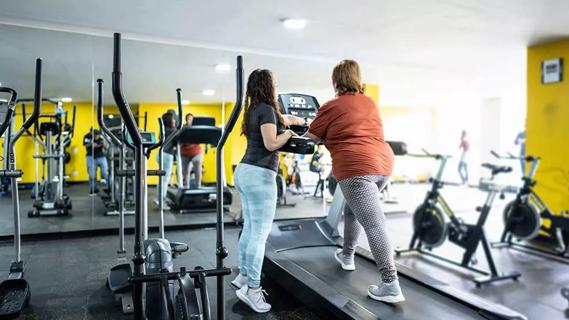
Ask questions, get referrals and consider if someone is a good fit for you and your fitness goals
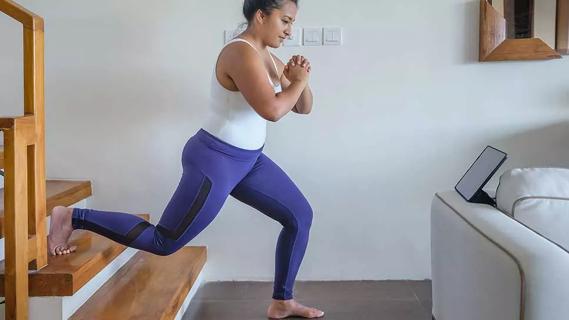
Expect a few bumps in the road, work out for the right reasons and give yourself some credit
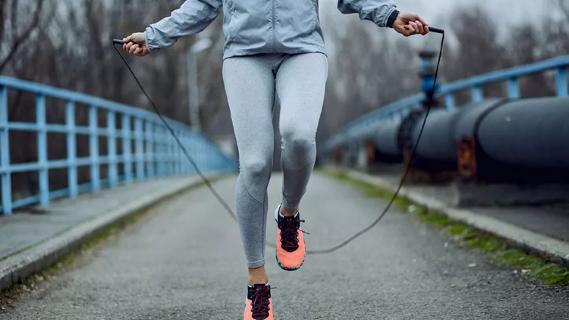
Jump into the swing of things to improve your coordination, burn calories and get your heart rate going

Walking with a weighted backpack is a low-impact, full-body workout that’s growing in popularity
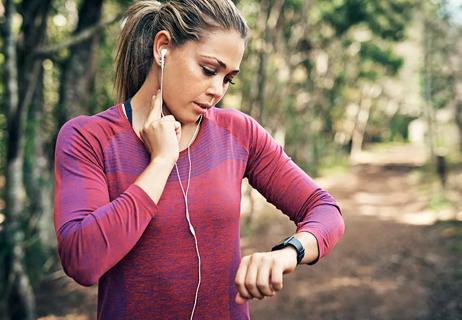
A super high heart rate means you’re burning more than fat
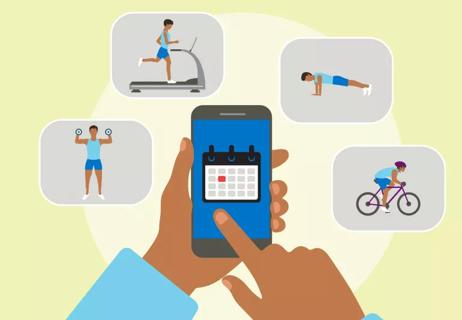
Meet your workout goals by accounting for frequency, intensity, time and type

Type 2 diabetes isn’t inevitable with these dietary changes

Applying a hot or cold compress can help with pain